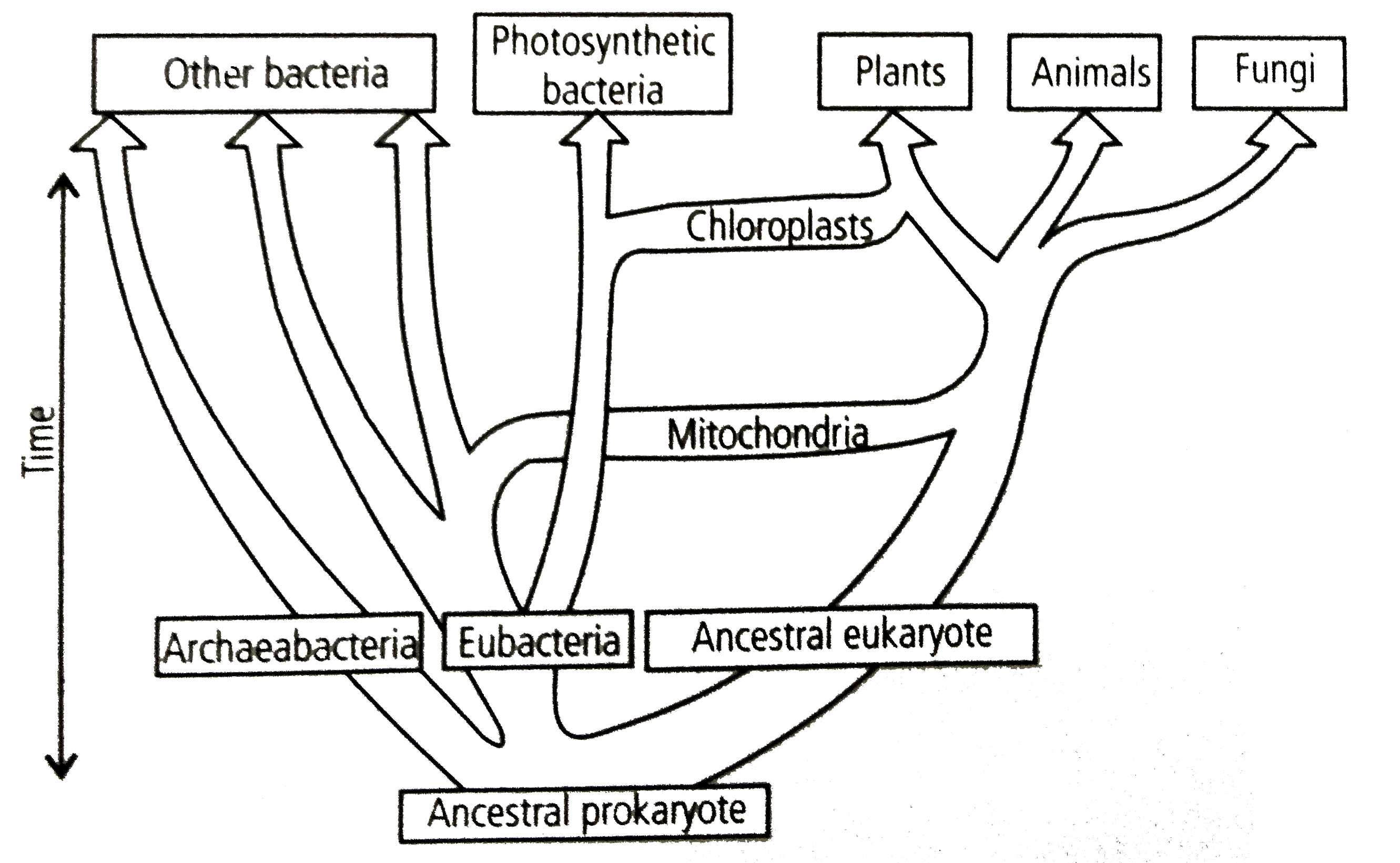Mitochondria and chloroplast divides by
A
Meiosis-I equivalent to mitosis division
B
Mitosis
C
Fission
D
Meiosis
Video Solution
Text Solution
The correct Answer is:C
|
Answer
Step by step video, text & image solution for Mitochondria and chloroplast divides by by Biology experts to help you in doubts & scoring excellent marks in Class 12 exams.
Updated on:21/07/2023Similar Questions
Knowledge Check
Chloroplasts
AAre found in all plant cellsBHave chlorophyll as their only pigmentCDo not contain any DNA and rely totally on the genes in the nucleus for the coding of their required proteinsDAre involved in the synthesis of sugarThe symbiont hypothesis suggests that there are similarities between prokaryotes, mitochondria, and chloroplasts like
APresence of circular DNA associated with histones and 70S ribosomesBPresence of circular DNA not associated with histones and 70S ribosomes presentC50S ribosomes and DNAD30S ribosomes and DNAGiven diagram illustrates an evolutionary tree.

Which of the following statements can be deduced from the given evolutionary tree?
(i) The ancestral eukaryotes were anaerobic.
(ii) All eukaryotes were anaerobic.
(ii) All eukaryotes possess mitochondria.
(iii) Eubacteria and Eukaryota have a common ancestor whereas Archebacteria have a unique and independent origin.
(iv) Mitochondria and chloroplasts have similar genomes.
(v) Mitochondria are presents in plants, animals and fungi.
(vi) chloroplasts and mitochondria arose asendosymbionts.
(vii) Fungi and animals lost chloroplasts during evolution.Aiii,v and viBi,v and viCii,iii,iv and vDi,v,vi and vii
"Cell within the Cell" is stated for mitochondria and chloroplasts.
View SolutionAssertion . Mitochondria and chloroplasts have their own genome
Reason . Endoplasmic reticulum and Golgi body are the cell organelles which have their own DNA
View SolutionRibosomes of bacteria , mitochondria and chloroplasts are
View SolutionRibosomes of bacteria mitochondria and chloroplasts are of
View SolutionBoth mitochondria and chloroplasts
View Solution

